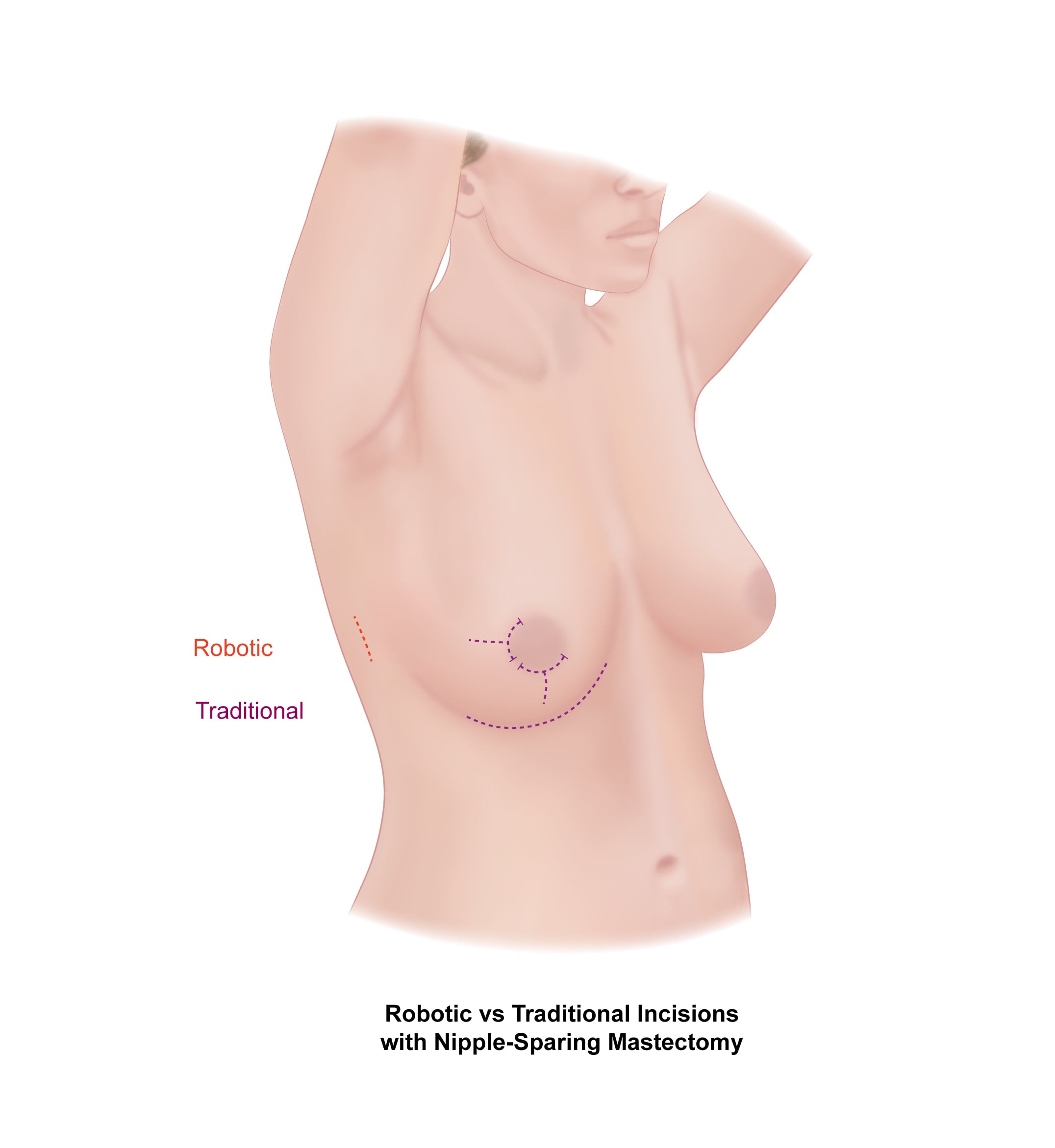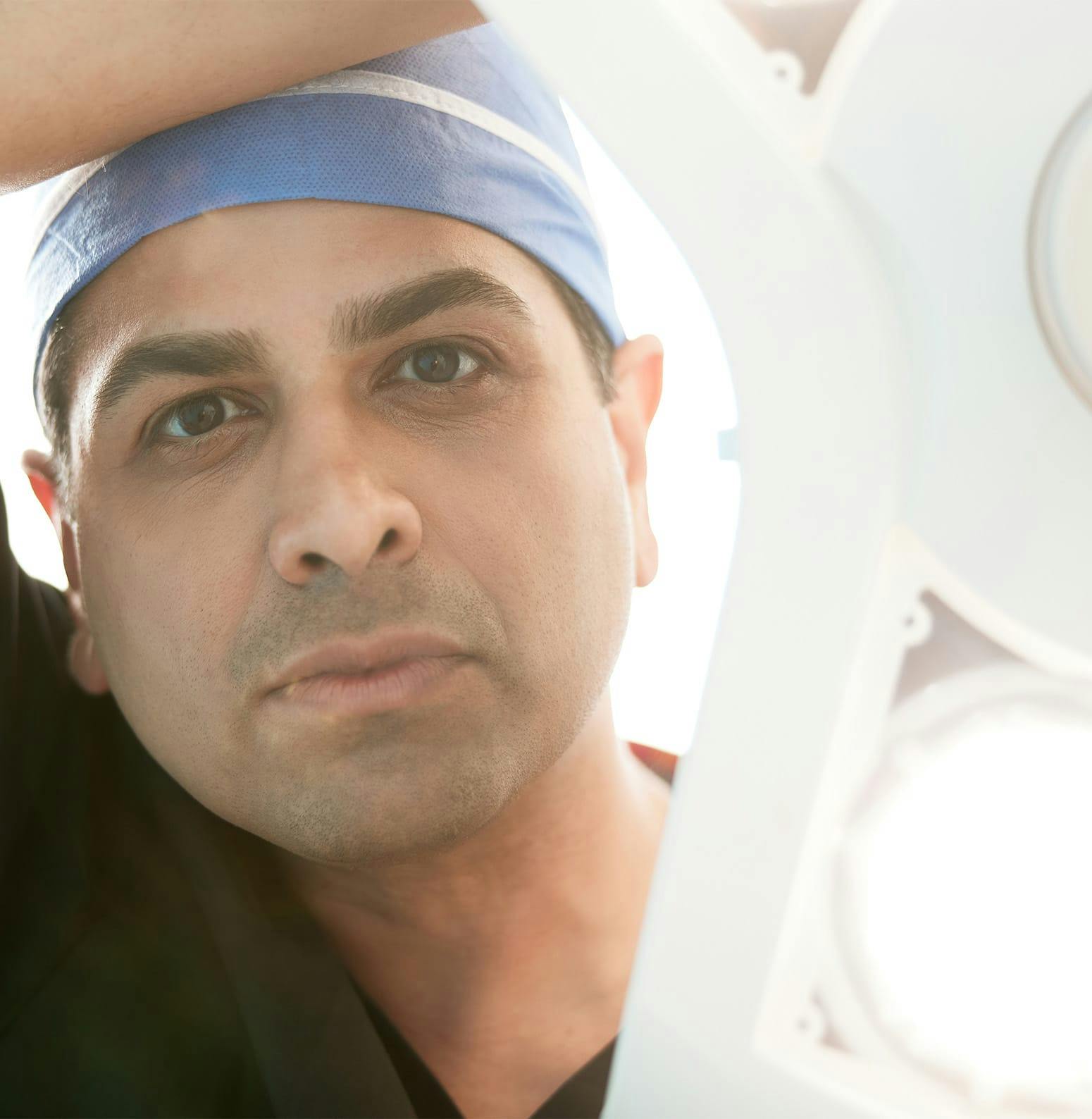For patients seeking preventative mastectomy or breast cancer surgery, nipple-sparing mastectomy (NSM) has become an optimal choice in removing breast tissue while preserving the nipple-areolar complex.
Small Incisions: Aesthetic And Safe
As with any surgery, there are risks of developing complications. Robotic nipple sparing mastectomy with breast reconstruction utilizes the da Vinci robotic Xi surgical system to provide superior clinical outcomes. Traditional nipple sparing mastectomy is a difficult technique to perform because of the technical limitations associated with the procedure.
The blood supply to the nipple areola complex and the breast skin envelope is through the skin. Incisions placed on the breast can decrease this blood supply. By placing incisions near the armpit, away from the breast, blood supply is preserved to the breast skin and the nipple. This may reduce the risk of loss of the skin and/or nipple (tissue necrosis).




